#22 March 1931
Explore tagged Tumblr posts
Text


Talk Like William Shatner Day
Talk Like William Shatner Day, celebrated on March 22, pays tribute to the famous Canadian actor — William Shatner. Shatner gained worldwide recognition due to his role in the cult sci-fi series, “Star Trek.” Shatner is appreciated for his unique dialogue delivery and performance and is often imitated by his fans. Hence, the day has become a perfect opportunity to pay a tribute to the memorable performances of the actor. Watch your favorite episodes starring the actor and enjoy the nostalgia on this day.
History of Talk Like William Shatner Day
Impressionists had been paying tribute to the actor William Shatner for years. Finally, however, an official day was observed in 2009. Maurice LaMarche, a famous Shatner impressionist, posted a video clip on YouTube and declared March 22 as International Talk like William Shatner Day. In the video, LaMarche gave the viewers a tutorial on how Shatner can be imitated and pronounced several words in the actor’s iconic style. The video went viral since LaMarche already has a large fan following from his roles in “Futurama,” “The Simpsons,” “Pinky and the Brain,” “Frozen,” and more.
Similarly, Doug VanHorn had the same idea, and he created a Facebook page idolizing William Shatner’s impressions. After a short feud, both LaMarche and VanHorn decided to join forces. They came up with International Talk Like William Shatner Day. From thereon, we celebrate the day every year!
Shatner is also an author, producer, director, screenwriter, commercial astronaut, and musician. The role that has gained him an eternal fan following is his portrayal of Captain James T. Kirk of the U.S.S. Enterprise in the Star Trek franchise. He also starred in the first seven Star Trek movies and co-wrote several novels set in the Star Trek universe. Apart from Star Trek, Shatner also played a police sergeant in “T. J. Hooker” and moved on to host the reality-based television series “Rescue 911.”
Talk Like William Shatner Day timeline
1951
Making an Impact
William Shatner makes his acting debut.
1954
The Small Screen
Shatner stars in his first major T.V. role as Ranger Bob.
1974
Celebrities and Sports
Shatner makes an appearance on “Celebrity Bowling.”
2017
Getting Animated
Shatner lends his voice to the animated film “Batman vs. Two-Face.”
Talk Like William Shatner Day FAQs
What Is William Shatner’s net worth?
The Canadian-born actor, producer, and director has a total net worth of $100 million.
What disease does William Shatner have?
The famous actor suffers from tinnitus.
Did Shatner smoke cigarettes?
Yes. Shatner started smoking at a young age since his father also smoked.
Talk Like William Shatner Day Activities
Watch “Star Trek: ”Want to figure out why so many people adore William Shatner? Binge-watch “Star Trek” and you will find out! Then, make sure you pick up the best episodes of the series where Shatner has outdone himself.
Imitate Shatner: To celebrate the day properly, try to imitate Shatner. Get together with some friends and make videos of imitations you can post on social media. Who knows, your act might go viral!
Read up about his career: Shatner has an extensive career with roles that are big and small. Read up on all his work to learn how he eventually gained such a mass following. His life is an inspiration, especially for aspiring actors.
5 Interesting Facts About William Shatner
Money earned: Shatner is the richest actor in the “Star Trek” franchise.
T.V. appearance: Shatner appeared in the series “The Twilight Zone.”
The first interracial kiss in 1968: Shatner was a part of one of the first interracial kisses on television in “Star Trek.”
Shatner starred with his daughters: In the 1966 “Star Trek” episode ‘Miri,’ the actor's daughters starred with him.
A gift from NASA: NASA engineers presented Shatner with a replica of the Enterprise.
Why We Love Talk Like William Shatner Day
It reminds us of Shatner’s body of work: The day reminds us of all the fantastic and groundbreaking projects Shatner was a part of. He has become unforgettable due to his unique roles in popular series.
It appreciates his talent: The special day appreciates the talent of Shatner by displaying him as an icon who gave performances that were unique and inspirational. In addition, such days spread positivity amongst the acting community.
It is a tribute to Shatner: Though there are hundreds of great actors in the country, few have a distinctive style. Shatner is one of them. The day is a tribute to all the great projects he was a part of and the roles he performed.
Source
#International Talk Like William Shatner Day#InternationalTalkLikeWilliamShatnerDay#Star Trek#actor#NoHo#LA#USA#summer 2017#Academy of Television Arts & Sciences#North Hollywood#travel#22 March 1931#William Shatner#ITLWSD#anniversary#birthday#vacation#Canadian actor#culture#original photography#plaque#Los Angeles#landmark#tourist attraction#tv#movie#Canada#Maple Leaf Flag
4 notes
·
View notes
Text

A view of the Central Park reservoir on March 22, 1931.
Photo: NY Daily News via Getty Images/Insider
#vintage New York#1930s#Central Park#aerial view#reservoir#vintage NYC#March 22#22 March#vintage Manhattan
82 notes
·
View notes
Text

Happy Birthday Captain Kirk! 🎂🍾
William Shatner (born March 22, 1931) is a Canadian actor. In a career spanning seven decades, he is best known for his portrayal of James T. Kirk in the Star Trek franchise
35 notes
·
View notes
Text
Victoria Spivey

Victoria Regina Spivey (October 15, 1906 – October 3, 1976), sometimes known as Queen Victoria, was an American blues singer, songwriter, and record company founder. During a recording career that spanned 40 years, from 1926 to the mid-1960s, she worked with Louis Armstrong, King Oliver, Clarence Williams, Luis Russell, Lonnie Johnson, and Bob Dylan. She also performed in vaudeville and clubs, sometimes with her sister Addie "Sweet Peas" (or "Sweet Pease") Spivey (August 22, 1910 – 1943). also known as the Za Zu Girl. Among her compositions are "Black Snake Blues" (1926), "Dope Head Blues" (1927), and "Organ Grinder Blues" (1928). In 1961, she co-founded Spivey Records with one of her husbands, Len Kunstadt.
Born in Houston, Texas, she was the daughter of Grant and Addie (Smith) Spivey. Her father was a part-time musician and a flagman for the railroad; her mother was a nurse. She had three sisters, all three of whom also sang professionally: Leona, Elton "Za Zu", and Addie "Sweet Peas" (or "Sweet Pease") Spivey (August 22, 1910 – 1943), who recorded for several major record labels between 1929 and 1937, and Elton Island Spivey Harris (1900–1971). She married four times; her husbands included Ruben Floyd, Billy Adams, and Len Kunstadt, with whom she co-founded Spivey Records in 1961.
Spivey's first professional experience was in a family string band led by her father in Houston. After he died, the seven-year-old Victoria played on her own at local parties. In 1918, she was hired to accompany films at the Lincoln Theater in Dallas. As a teenager, she worked in local bars, nightclubs, and buffet flats, mostly alone, but occasionally with singer-guitarists, including Blind Lemon Jefferson. In 1926 she moved to St. Louis, Missouri, where she was signed by Okeh Records. Her first recording, "Black Snake Blues" (1926), sold well, and her association with the label continued. She recorded numerous sides for Okeh in New York City until 1929, when she switched to the Victor label. Between 1931 and 1937, more recordings followed for Vocalion Records and Decca Records, and, working out of New York, she maintained an active performance schedule. Her recorded accompanists included King Oliver, Charles Avery, Louis Armstrong, Lonnie Johnson, and Red Allen.
The Depression did not put an end to Spivey's musical career. She found a new outlet for her talent in 1929, when the film director King Vidor cast her to play Missy Rose in his first sound film, Hallelujah!. Through the 1930s and 1940s Spivey continued to work in musical films and stage shows, including the hit musical Hellzapoppin (1938), often with her husband, the vaudeville dancer Billy Adams.
In 1951, Spivey retired from show business to play the pipe organ and lead a church choir, but she returned to secular music in 1961, when she was reunited with an old singing partner, Lonnie Johnson, to appear on four tracks on his Prestige Bluesville album Idle Hours.
The folk music revival of the 1960s gave her further opportunities to make a comeback. She recorded again for Prestige Bluesville, sharing an album, Songs We Taught Your Mother, with fellow veterans Alberta Hunter and Lucille Hegamin, and began making personal appearances at festivals and clubs, including the 1963 European tour of the American Folk Blues Festival.
In 1961, Spivey and the jazz and blues historian Len Kunstadt launched Spivey Records, a low-budget label dedicated to blues, jazz, and related music.
In March 1962, Spivey and Big Joe Williams recorded for Spivey Records, with harmonica accompaniment and backup vocals by Bob Dylan. The recordings were released on Three Kings and the Queen and Kings and the Queen Volume Two. Dylan was listed under his own name on the record covers. A picture of her and Dylan from this period is shown on the back cover of the Dylan album, New Morning. In 1964, Spivey made her only recording with an all-white band, the Connecticut-based Easy Riders Jazz Band, led by the trombonist Big Bill Bissonnette. It was released first on an LP and later re-released on compact disc.
Spivey married four times; her husbands included Ruben Floyd, Billy Adams, and Len Kunstadt.
Spivey died in New York on October 3, 1976, at the age of 69, from an internal hemorrhage.
39 notes
·
View notes
Photo

On this day, 23 March 1931, Indian revolutionary socialists Bhagat Singh, Shivaram Rajguru and Sukhdev Thapar were executed by British colonial authorities in what is now Punjab, Pakistan. They had been sentenced to death for assassinating a senior British police officer in 1928, to avenge the police killing of Lala Lajpat Rai during an anti-colonial demonstration. While they opposed British colonialism, rather than narrow nationalism they advocated working class revolution against both British and Indian capitalists. They were all just 22-23 years old. Singh commented: "They may kill me, but they cannot kill my ideas. They can crush my body, but they will not be able to crush my spirit". In the wake of their conviction, Mohandas Gandhi appealed to the Viceroy of India to commute their sentences, but he also appealed to huge crowds not to take action to secure their release, as he had signed a truce agreement with authorities. After they were executed, Gandhi was greeted by a crowd he described as "incensed" flying black flags and shouting “Gandhi go back”, “Down with Gandhism”, “Gandhi's truce has sent Bhagat Singh to gallows” and “Long live Bhagat Singh”. After their deaths, Bhagat Singh in particular became a national hero. More information, sources and map: https://stories.workingclasshistory.com/article/9583/singh,-thapar-and-rajguru-executed Pictured left to right: Bhagat Singh, Shivaram Rajguru and Sukhdev Thapar https://www.facebook.com/workingclasshistory/photos/a.296224173896073/2236021649916306/?type=3
133 notes
·
View notes
Text

The underground Italian anarchist press inside and outside fascist Italy
Resistance and propaganda to fascism did not begin in 1939, 1936 or 1939. Nor did it consist simply of slogans hastily painted on walls in the dead of night. A powerful anarchist underground press operated in Italy throughout the period of fascist dictatorship and occupation pressing the case for liberation through social revolution. To gauge the extent of the resistance to fascism and Nazi occupation in Italy, here is a review of the libertarian underground press at the time

Voci officina (Voice of the factories)
Underground paper put out by workers of the Turin factory councils, among them the anarchists Michele Guasco and Dante Armanetti. 8 or 9 issues in the first year of fascist terror.
Iconoclasta!
Anarchist review open to all tendencies. Produced monthly in Paris in 1924–5, when together with the Italian section of Rivista Internazionale Poliglotta (International Polygot Review) it ceased publication to produce La Tempra
La Tempra
International anarchist review. Monthly from Paris from 1925–6 (lack of information on his publication in following years)
Lotta anarchica (anarchist struggle)
Published in Paris for distribution in Italy. Subtitled: For armed insurrection against fascism. The editions specifically for Italy were produced in small format, three column
width on thin paper, with 3 to 4 pages that could be included in a letter. Regular publication up till end of March 1931.
Ai Lavatori d’Italia (To the Italian workers)
Milan , October 1943. Small format, 4 pages. The programme of the revolutionary syndicalists of the Unione Sindacale Italiana. For a @socialist republic of syndicates@. Edited by Aldibrando Giovanetti.
Fronte Unico dei Lavatori (United Workers Front)
First of all in pamphlet form, then a paper. 12 pages. Published in the Romagna with the support of the anarchists of Liguria, Tuscany, and Romagna after a meeting in Florence.
L’Adunata dei Libertari: voci dei comunisti libertari (voice of the libertarian communists)
Milan. Underground publication of first 3 numbers., first one appearing 18th June 1944. Small format with 3 columns, 2 pages. Editor was Pietro Bruzzi, arrested, tortured and shot by the Nazis at Legnano.
Il Comunista libertario.
Milan. Paper of the Federazione Comunista Libertaria Italiana. First appeared December 1944. Small format with 3 columns, 4 pages. In March 1945 its second issue appeared, and continued regularly until the end of April 1945, with the final fall of fascism
L’Azione Libertaria
Milan. 5 issues appeared from August to September 1944 in the same format as above papers, and indeed most of the underground press.
Rivoluzione
Paper of the Liga dei Consigli Rivoluzionari (League of Revolutionary Councils) From December 1944 included the programme of the Liga. Composed of communists, anarchists and sympathizers. Second issue appeared in February 1945.
Era Nuova
“Voice of the libertarian communists”. Turin. First issue appeared in October 1944, 2 columns, small format, 4 pages. 2nd issue in November ’44 and third in March ’45.
L’Adunata dei Refrattari.
New York. At the end of ’44 the New York Italian anarchist paper published several supplements aimed at Italy. Thin paper, small format, 2 columns, 8 pages. It was distributed above all by soldiers in the American Armed Forces, despite the American authorities heavily punishing anyone involved in its dissemination. Issue 1 in December ’44 and Issue 3 in March ’45.
Umanita Nova.
Anarchist paper. Genoa. Published just a little before insurrection against the fascist authorities and in preparation for it, 22 April ’45. Small format, 3 columns, 4 pages. Continued numbering from when it was a daily paper published in Milan and Rome and edited by Malatesta in 1920–1922.
Umanita Nova
Anarchist paper. Florence. Appeared 24th September ’44, without the authorization of the Allied authorities. The printer Lato Latini was arrested and condemned to 1 year in prison. In February ’45, after a suspension of several months, restarted on a monthly basis with Umanita Nova; Fiorentina (Florentine)as subtitle and with announcement that the Federzione Anarchica Italiana was being formed. Prematurely as it happens, as the FAI was now constituted until the Carrara conference in September 1945
Auf Ruf: Offizere, Unteroffizere und Mannschaften der Deutschen Wehrmacht. Appeal in German put out by Milanese anarchists to the German armed forces in March 1945
Pamphlets of Risveglio-Reveil.
Published somewh ere in Switzerland. After the suppression of this Swiss paper, small pamphlets of 16 pages on a monthly basis (half in Italian, half in French) appeared from September 1940. Changed title several times, but continued with a surprising regularity up until the end of December 1946 with no.147
La Rivoluzione Libertaria.
Organ of the libertarian groups of southern Italy. Bari. It was the first official anarchist paper since the fascist takeover. Initially it appeared on 30th June ’44 without Allied authorization, and was distributed secretly until 16th November ’44 when it was legalized.
L’Idea Proletaria
Milan. 2,000 copies printed. Edited by Mario Perelli with a vague , gradualist line. Came out from Autumn ’43, with a short life.
Sempre Avanti!
Anarchist paper secretly printed and distributed in Genoa.
Il Seme Libertario
Single issue paper of the Federazione Comunista Libertaria of Livorno. Appearing semi-clandestinely, because of persistent censorship of Allied authorities in summer 1945, with false indication of its address (Rome)
Aurora
Libertarian communist (Ravenna). Paper of the Romagna anarchists,; its first 2 issues appeared clandestinely.
Il Partigiano
Political weekly of the partisans of liberty. Rome. Anti-authoritarian political line , edited by Carlo Andreoni, libertarian Marxist militant of the Unione “Spartaco”. Underground publication from ’43, continued up until ’45, probably tolerated by the Allied authorities because not directly anarchist, but suspended for 4 issues in march ’45, for “having published forbidden notices of the Allied military censorship”.
La Montagna
Libera voce clandestine. Rome. Paper of “a group of partisans of the North” taking the place of Il Partigiano during its forced suspension. On its list of @friends and neighbours@ was Umanita Nova.
[1] Williams L. Proletarian Order 1975
[1] Williams L. Proletarian Order 1975
[2] Rossi, A. The Birth of Fascism 1938
#history#antifa#class struggle#fascism#Germany#Italy#nazism#Organise!#popular opposition to dictatorship#resistance#World War II#1930s#1940s#anti-fascism#anarchism#anarchy#anarchist society#geopolitics#autonomy#revolution#communism#anti capitalist#anti capitalism#late stage capitalism#daily posts#libraries#leftism#social issues#economics#economy
4 notes
·
View notes
Text


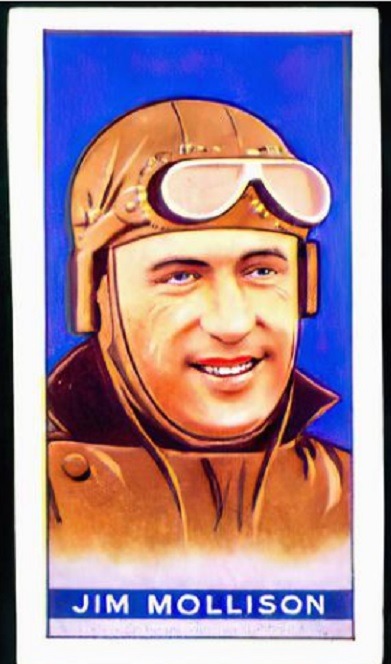
James Allan Mollison was born on April 19th 1905 in Glasgow.
Graeme Obree, Chris Hoy and a certain steam train have all bee called The Flying Scotsman in their time, but the original title goes to a man who actually did fly, Jim Mollison.
Jim would go on to become a pioneering aviator, breaking records for long distance flights. His marriage to fellow aviator Amy Johnson also saw them lauded as the golden couple during their time together.
Born the only child of Hector Alexander Mollison, a consultant engineer, and Thomasina Macnee Addie. He was educated at The Glasgow Academy and Edinburgh Academy and took an early interest in flying and obtaining his Royal Air Force (RAF) Short Service Commission at 18, he was the youngest officer in the service, and upon completion of training was posted to India, flying on active service in Waziristan.
At the age of 22, Mollison became a flying instructor at Central Flying School (CFS), again setting the record for being the youngest in this role. Shortly after, he transferred to the RAF Reserve and devoted his time to civil aviation. In 1928-29, he served as an instructor with the South Australian Aero Club in Adelaide, leaving that position to become a pilot with Eyre Peninsular Airways and Australian National Airways.
In July-August 1931, Mollison set a record time of eight days, 19 hours for a flight from Australia to England, and in March 1932, a record for flying from England to South Africa in 4 days, 17 hours flying a de Havilland Puss Moth.
Mollison eventually served in the ATA Air Transport Auxiliary in the Second World War. In June 1941 Mollison and an ATA crew delivered Cunliffe-Owen OA-1 G-AFMB to Fort Lamy, Chad. The aircraft was fitted out as a personal transport for General De Gaulle.
Mollison was feted in London and New York, and could lead the life he had always wanted. “I am a night bird,” he once said. “Life and enjoyment begin when daylight fades. Cocktail bars and clubs, music, beautiful women— that’s living. Daylight comes to me as an interval for sleeping until an afternoon drink helps to bring on another evening.” His autobiography was called “Playboy of the Air”.
When Mollison and Amy Jonson married in 1932 the press were delighted, they were dubbed The Flying Sweethearts by the press and public. . The match was was perfect for the publicity machine, and the two of them set about devising new aviation records: in 1933 they flew together from Wales to New York and had a ticker-tape reception in Wall Street. But marriage did not last long or end well. It has sometimes been assumed that the match was a simple career move on Mollison's part: certainly he did not halt his relationships with other women. Nor did it limit his drinking. As I said earlier, he got the tag “ the Flying Scotsman” but those close to him called him “Brandy Jim”.
As well as his Playboy lifestyle and heavy drinking Jim Mollison was also quick with his fists, and a manager from the Grosvenor House Hotel was reported as saying ” We've had the most awful night here. Jim Mollison and Amy Johnson had a fearful row and he's beaten her up. The bathroom looks like a slaughterhouse.” The marriage officially ended in 1938.
Mollison kept flying, and – like Johnson – flew in a non-combat role in WWII. Both of them flew in the Air Transport Auxiliary. Johnson died in 1941 after baling out of aircraft. Mollison had at least one close escape, when his plane was shot up, but survived the war.
Mollison later settled in London and ran a public house. He married Maria Clasina E. Kamphuis in 1949 at the Maidenhead Register Office. Mollison continued to abused alcohol and in 1953, the Civil Aviation Authority Medical Board revoked his pilot's licence. The couple separated but Maria bought the Carisbrooke Hotel in Surbiton for him – a temperance hotel.
Suffering from acute alcoholism, he was admitted to The Priory, Roehampton, southwest London, where he died on 30 October 1959, the official cause of death was pneumonia, but unofficially it was thought to be alcoholic epilepsy.
12 notes
·
View notes
Text
USS CONSTITUTION in Port Arthur, Texas. She was newly refurbished and embarked on a thank-you tour, stopping at Atlantic and Gulf Coast ports from July 1931 to May 1932.
Texas Parks and Wildlife Department: TXPWD_1997-22-145
Date: March 1932

#USS CONSTITUTION#Old Ironsides#United States Class#44-gun Frigate#Original 6 frigates#Sailing Ship#Warship#Ship#United States Navy#U.S. Navy#US Navy#USN#Navy#Port Arthur#Texas#Gulf Coast#March#1932#interwar period#my post
86 notes
·
View notes
Text

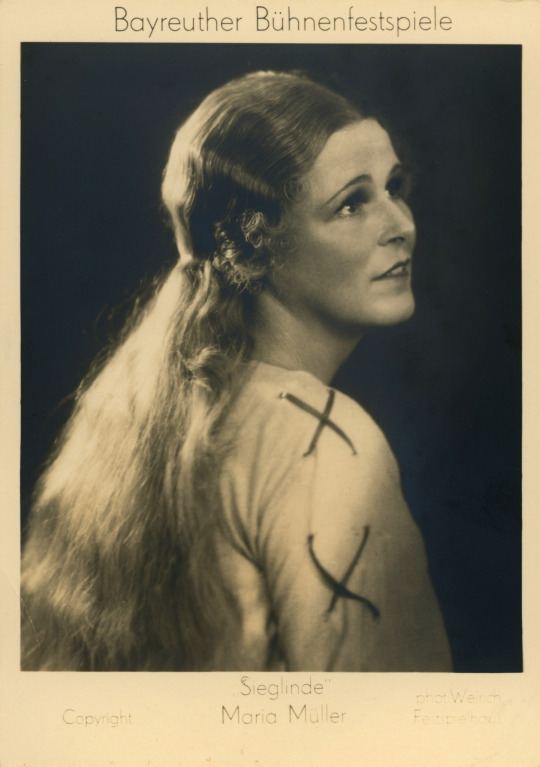




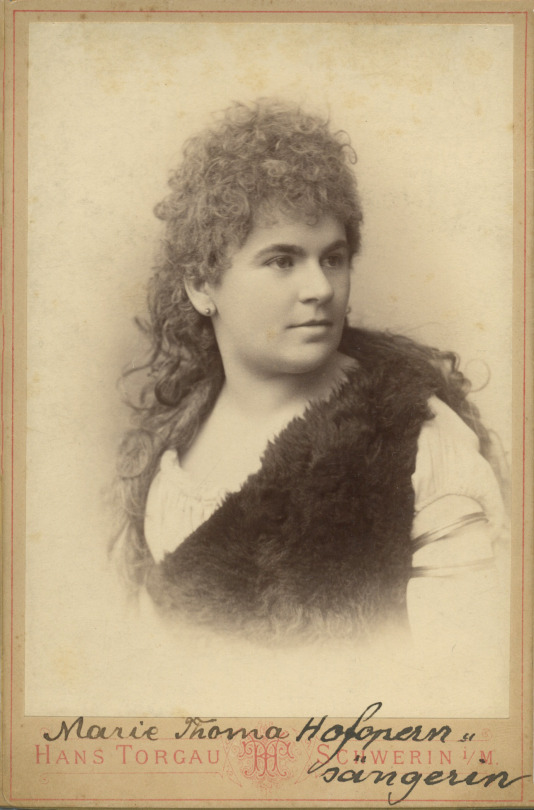
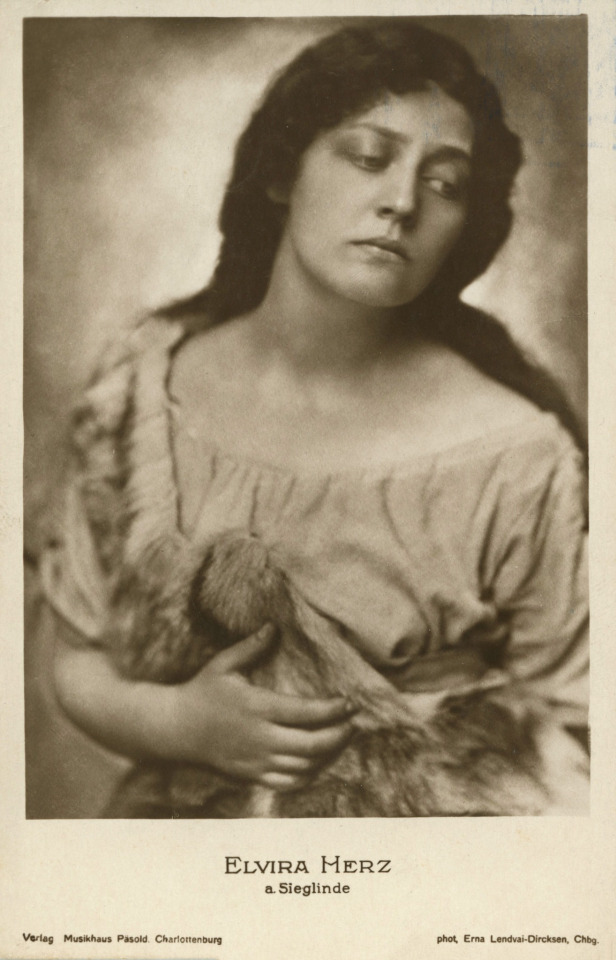
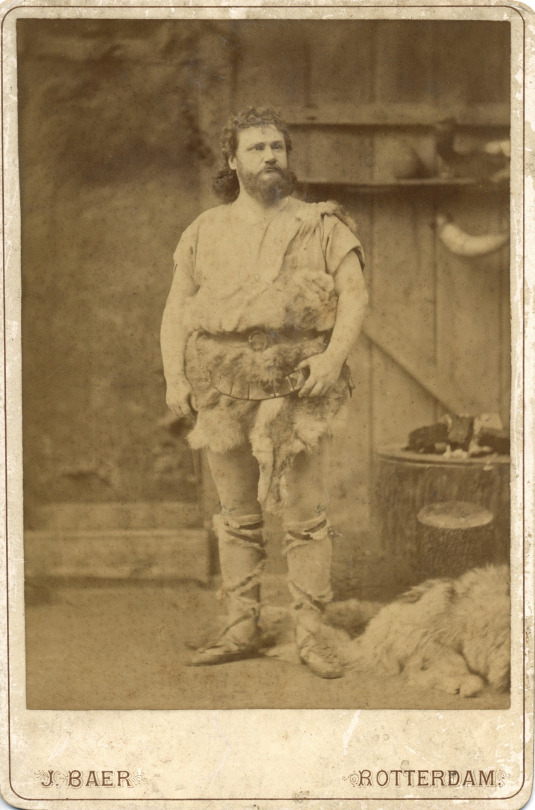


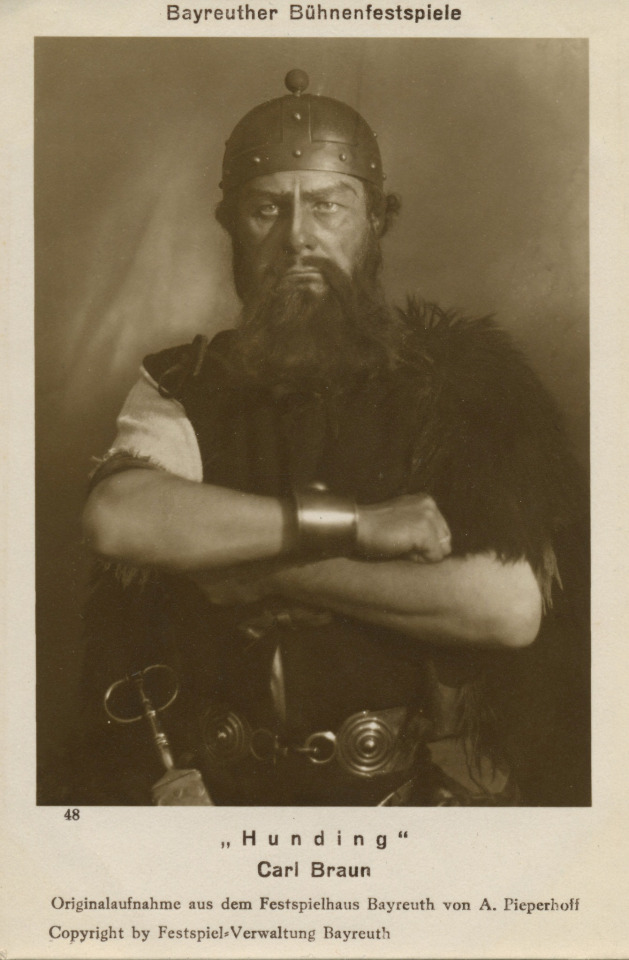

„WALKÜRE“ R. Wagner / FIRST ACT
Some Sieglindes, Siegmunds and Hundings
Maria Müller (29 January 1898 – 15 March 1958); Czech-Austrian lyric/dramatic soprano, Emanuel List (22 March 1888 - 21 June 1967; Austrian-American bass and Franz Völker (31 March 1899 – 4 December 1965); dramatic tenor, Bayreuth, 1933
Maria Müller as Sieglinde, Bayreuth, 1937
Martha Leffler-Burckhardt (16 June 1865 -14 May 1954); German soprano as Sieglinde, Bayreuth, 1908
Rose Pauly-Dressen (15 March 1894 – 14 December 1975); Hungarian dramatic soprano as Sieglinde, Frankfurt, ?
Martha Selle as Sieglinde, Breslau, ?
Florence Easton (25 October 1882 – 13 August 1955); English dramatic soprano as Sieglinde, Berlin, ?
Marie Thoma as Sieglinde, Schwerin, ?
Elvira Herz as Sieglinde, Berlin, ?
Adolf Gröbke ? (26.5.1872 -16.9.1949); German tenor as Siegmund, Rotterdam, ?
Lauritz Melchior (20 March 1890 – 18 March 1973); Danish-American heldentenor as Siegmund, Bayreuth, 1924, 1925 and 1931
Fiorenzo Tasso (1901 - 29. 3. 1976); French tenor as Siegmund, Milan, 1945
Carl Braun (2 June 1886 – 24 April 1960); German bass as Hunding, Bayreuth, 1925, 1927, 1928 and 1930
Lorenz Corvinus (20 July 1870 - 18 January 1952); German bass as Hunding, Bayreuth, 1908
#classical music#opera#music history#bel canto#composer#classical composer#aria#classical studies#maestro#chest voice#Die Walküre#The Valkyrie#Richard Wagner#Wagner#Der Ring des Nibelungen#The Ring of the Nibelung#Norse mythology#Völsunga saga#Poetic Edda#Sieglinde#classical musician#classical musicians#classical voice#musician#musicians#music education#music theory#history of music#historian of music#classical
25 notes
·
View notes
Text
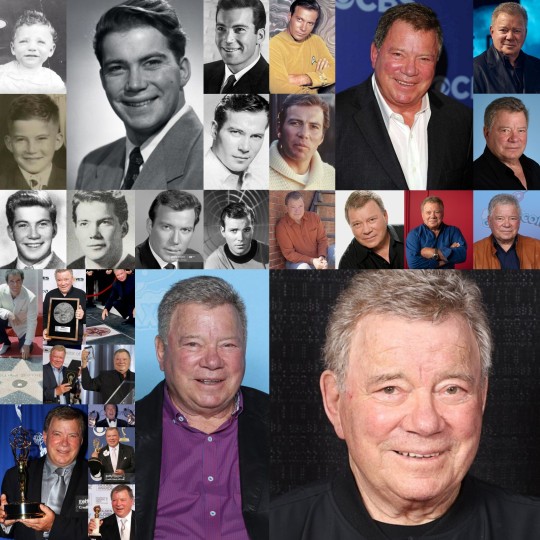
Happy Birthday William 🥳🎂🎈🎁🎉
March 22,1931
Buon Compleanno 🥳🎂🎈🎁🎉
22 Marzo 1931
#william shatner#actor#world cinema#cinema#movies#film#filmography#cinemetography#drama movies#comedy movies#tv shows#50s movies#60s movies#70s movies#80s movies#90s movies#2000s movies#oedipus rex#theintrider#star trek#star trek fandom#james t kirk#americanpsycho2#creatorsthepast#boston legal#the practice#legendaryactor#old hollywood#celebrity#happy birthday
10 notes
·
View notes
Photo
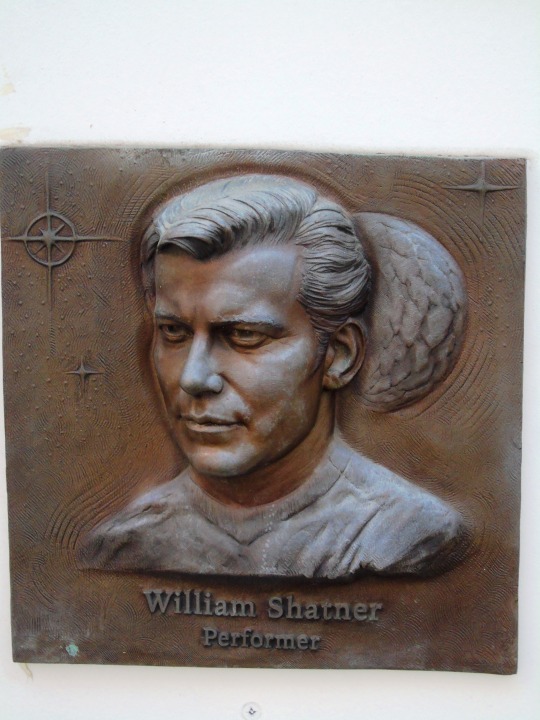
International Talk Like William Shatner Day
Today is International Talk Like William Shatner Day (ITLWSD). In 2009, Maurice LaMarche and Doug VanHorn bumped into each other on Facebook while each was attempting to have March 22nd–Shatner’s birthday—designated as ITLWSD. Though initially sworn enemies locked in a Lazarus-like battle over who’d thought of it first, the men eventually joined forces to promote the brash, percussive vocal stylings of Shatner.
If smooth jazz and slam poetry had a baby, then gave him up to be raised in a nunnery next door to the Playboy mansion, the conditions might be right to forge another Shatner-class individual. But in our opinion, it can’t be done. Shatner didn’t just break the mold: he smashed his way out and pulverized it with his pudgy newborn fists. Does any of this describe the man? Is the real Shatner somewhere in that bouquet of imagery? Who knows? That’s the mystery of Shatner. He runs too deep to plumb.
Maurice LaMarche is a voice actor known for his work on Futurama, The Simpsons, Pinky and the Brain, Team America: World Police and Frozen, among many others. If you play Six Degrees of Separation with him, you’ll be done after one. We’ve all heard his voice in something. (Take that, Kevin Bacon.) Mr. VanHorn’s personal Facebook page points out that Donald Trump looks alarmingly similar to an Oompa-Loompa. Look it up; the resemblance is astonishing.
Source
#International Talk Like William Shatner Day#InternationalTalkLikeWilliamShatnerDay#Star Trek#actor#NoHo#LA#USA#summer 2017#Academy of Television Arts & Sciences#North Hollywood#travel#22 March 1931#William Shatner#ITLWSD#anniversary#birthday#vacation#Canadian actor#culture#original photography#plaque#Los Angeles#landmark#tourist attraction#tv#movie
2 notes
·
View notes
Text
Be Inspired by Victor Perez

Victor Perez was a Tunisian Jewish boxer, who became the World Flyweight Champion in 1931 and 1932, fighting under his ring name Young Perez.
Perez was arrested in Paris in 1943 by the Milice Francaise, a French collaborationist paramilitary force of the Vichy Regime. He was detained in the Drancy internment camp before being transported to the Auschwitz Concentration Camp.
Victor “Young” Perez died on the death march on January 22, 1945; probably he was shot because of an attempted escape or died of complete exhaustion. He was 33 years old.
The Institut National des Sports in Paris named its boxing arena after Victor Perez and put up a plaque in his memory. Victor Perez was inducted into the International Jewish Sports Hall of Fame in 1986.
#manchester#iraq#iraqi#london#uk#baghdad#liverpool#scotland#usa#france#boxing history#boxing#jewish history#jewish culture
9 notes
·
View notes
Text
George Mikhailovich Brasov
(1910-1931)

The only son of Grand Duke Mikhail Alexandrovich and his later wife, Natalia Brasova, George was born in his mother's apartment in Moscow on August 6, 1910.
Tsar Nicholas II granted his younger brother's son the Mikhailovich peerage and title of Brasov by his decree of 13 November 1910 and on 26 March 1915 George was elevated to the rank of Count of the Russian Empire.


On the night of 12–13 June 1918, George's father grand duke mikhail was shot dead on the outskirts of Perm by the Cheka, the Bolshevik secret police.

After the revolution in the spring of 1918, the seven-year-old was taken abroad under false documents under the guise of the son of an Austrian war officer. He lived with his mother in the UK and lived in a rented house at Wadhurst, Sussex, from Easter 1919. In 1927, due to financial problems, his mother relocated to Paris but he remained in England to finish his school year. He then went to another boarding school, École des Roches in Verneuil, Normandy, and then the Sorbonne in July 1931, Count Brasov succeeded in passing his first session at the Sorbonne.


George was an excellent athlete, and was particularly fond of technology and had inherited it from his father. He was a brilliant driver when it came to cars and dreamed of sports cars, but it is unfortunate that he inherited almost nothing from his father's huge fortune.

A picture of George in 1928 when he was 18 years old.
Nicholas II's cousin, Grand Duke Kirill Vladimirovich, who had styled himself emperor in exile, in 1928 granted George Brasov and his mother princely titles.
After the death of the Dowager Empress Maria Feodorovna in 1928, George received a third of her fortune in her will, with which Natalia bought the latest model of a Chrysler sports car as a reward for him after passing the university exam.
In the new car, Georges and his friend, 19-year-old Edgar Moncanar from the Netherlands, decided to take a trip south from Paris to Cannes.
On the way from Paris to Cannes, the car skidded near Sens, while Edgar was driving, they crashed into a tree, Edgar was killed, Georges was taken to the hospital in Auxerre, the capital of the Ayon department, and Natalia rushed to be at the bedside.

Photo of George accident near the Burgundian city of Sens, department of Yonne, about 120 kilometers southwest of Paris.
The next morning, July 22, 1931, George died without regaining consciousness, the last descendant of Emperor Alexander III, the son of almost the last emperor of Russia, with only three days left until his 21st birthday.
Natalia brought the young man's body to Paris and buried it in the Passy cemetery, and bought herself a place nearby. At the funeral ceremony, she appeared calm and reserved, but paler than usual. A funeral was arranged for young George, worthy of a person of imperial blood, but this led to the bankruptcy of his mother, who remained penniless throughout his life until her death.
In 1952, his mother died from cancer, and she was interred beside him in a grave marked by a Slavonic cross of stone on a marble tomb.


Written on their tombstones “the wife and son of Grand Duke Mikhail of Russia”.
#George Mikhailovich#mikhail alexandrovich#Natalia brasova#romanovs#russian empire#George brasov#brasov#countess brasova#michael alexandrovich#michael romanov
33 notes
·
View notes
Text




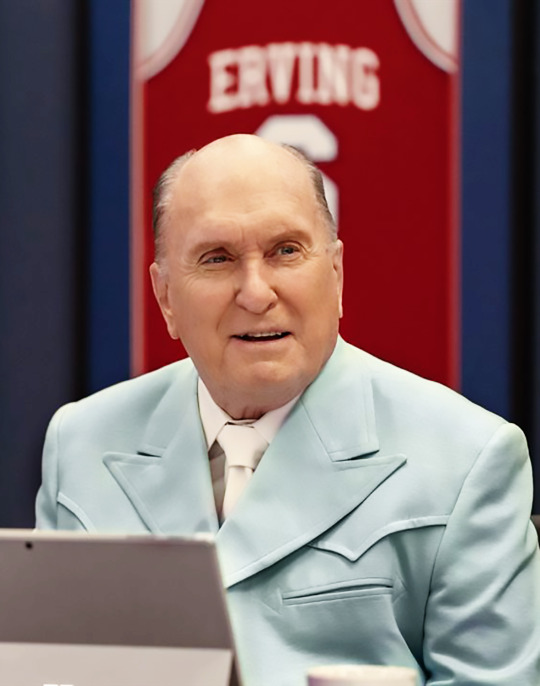
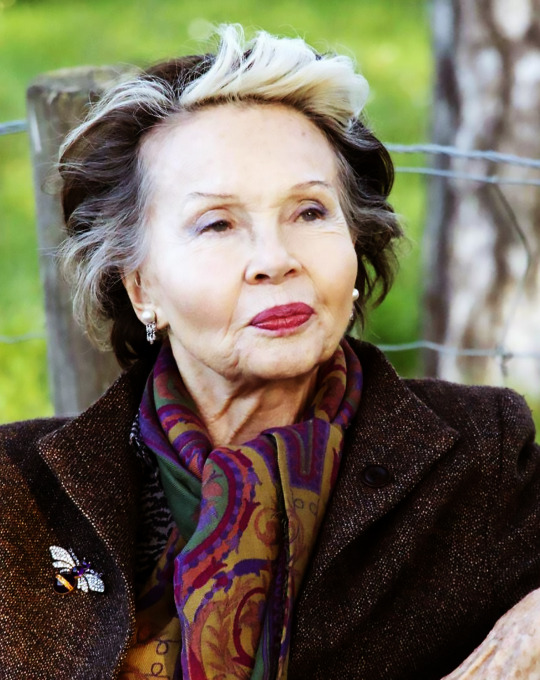




Old Hollywood stars 90+:
01 - Mamie Van Doren, born February 6, 1931 (92 years old);
02 - Angie Dickinson, born September 30, 1931 (91 years old);
03 - Mitzi Gaynor, born September 4, 1931 (91 years old);
04 - William Shatner, born March 22, 1931 (91 years old);
05 - Robert Duvall, born on January 5, 1931 (92 years old);
06 - Leslie Caron, born July 1, 1931 (91 years old);
07 - Claire Bloom, born February 15, 1931 (91 years old);
08 - Marisa Pavan, born June 19, 1932 (90 years old);
09 - James Earl Jones, born January 17, 1931 (92 years old);
10 - Clint Eastwood, born May 31, 1930 (92 years old).
#mamie van doren#angie dickinson#mitzi gaynor#william shatner#robert duvall#leslie caron#claire bloom#marisa pavan#james earl jones#clint eastwood#by lady hollywood
43 notes
·
View notes
Text
Jeanette MacDonald - The Iron Butterfly


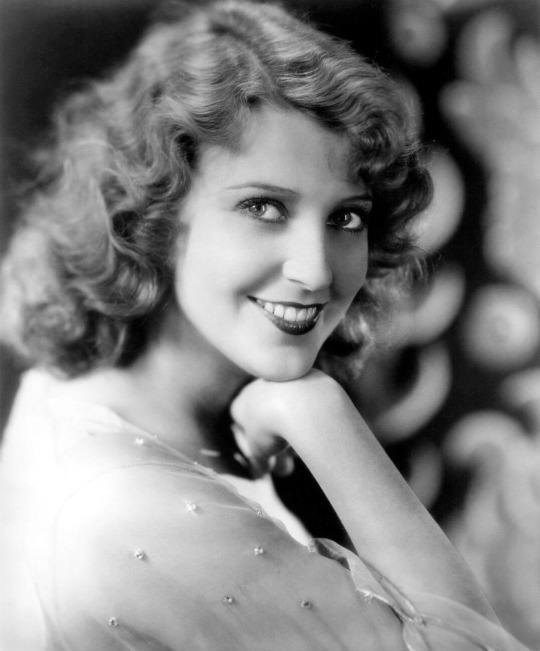






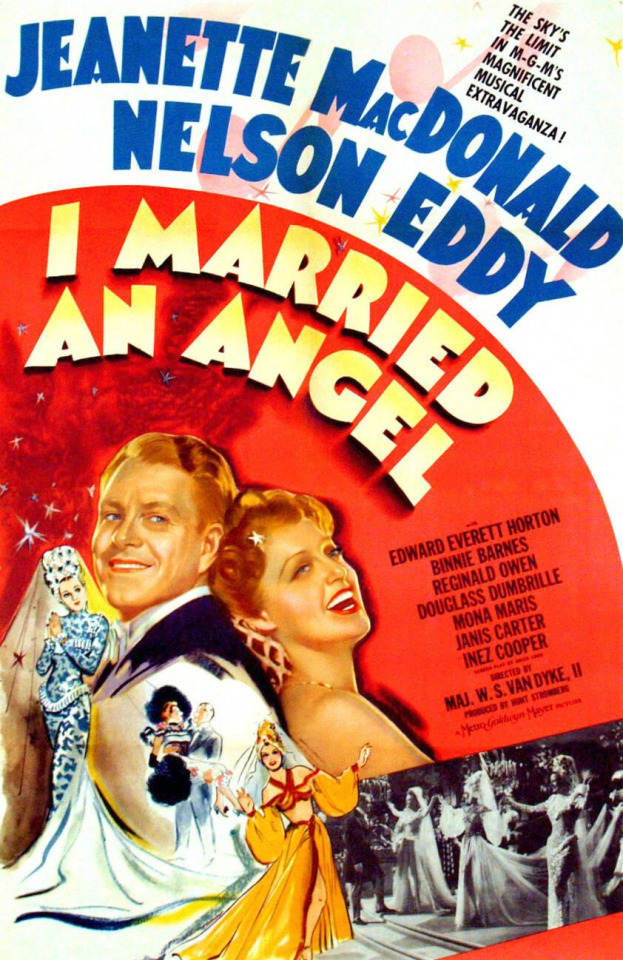
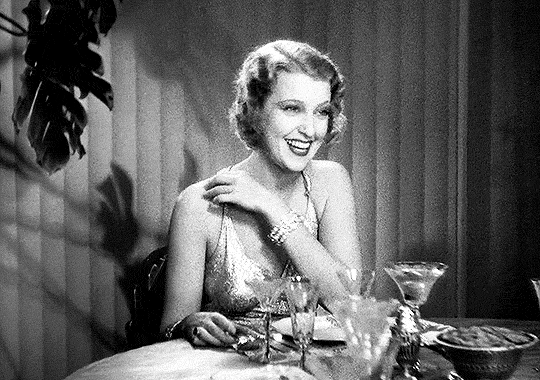

Jeanette Anna MacDonald (born in Philadelphia, Pennsylvania on June 18, 1903) was an American actress best remembered for her musical films in the 1930s. MacDonald was one of the most influential sopranos of the 20th century, introducing opera to film-going audiences and inspiring a generation of singers. She became known as "The Iron Butterfly", for she was one of the most lady-like and beautiful women in Hollywood, but when it came to contracts, she was tough and kept unwanted advances in check, rarely making a misstep in her career.
She was the third daughter of Scottish-American parents and the younger sister to character actress Blossom Rock ( who was most famous as "Grandmama" on the 1960s TV series The Addams Family), whom she followed to New York for a chorus job on Broadway in 1919.
After working her way up from the chorus to starring roles on Broadway, she was casted as the leading lady in Paramount Studios' The Love Parade (1929), a landmark of early sound films. Despite making many successful films with Paramount, she next signed with the Fox.
MacDonald then took a break from Hollywood in 1931 to embark on a European concert tour, performing at the Empire Theater in Paris and at London's Dominion Theatre. She was even invited to dinner parties with British Prime Minister Ramsay MacDonald and French newspaper critics. She returned to Paramount the following year and made more films.
In 1933, MacDonald left again for Europe, and while there signed with MGM, which brought her together with Nelson Eddy. The pair made eight pictures together, including Maytime (1937), arguably the best musical of all time. From then on, they were forever known as America's Singing Sweethearts.
In 1943, she left MGM and began pursuing other interests. She made her opera debut singing Juliette in Gounod's Roméo et Juliette in Montreal at His Majesty's Theatre. After the war, MacDonald made two more films, but quit the movies altogether in 1949. The 1950s found MacDonald in the Las Vegas nightclub circuit, on television, in sold-out concert tours, in studio recordings, and on musical stage productions.
In her final years, MacDonald developed a serious heart condition. She died in Houston, Texas while awaiting heart surgery; she was 61 years old.
Legacy:
Won the Screen Actors Guild award for Maytime (1937)
Crowned as the Queen of the Movies in 1939 by 22 million filmgoers in a New York Daily News survey as presented by Ed Sullivan
Has 2 RCA Red Seal gold records (one for "Indian Love Call" (1936) and another for "Ah, Sweet Mystery of Life" (1935)
Has 1 RIAA gold record for Favorites in Hi-Fi (1959)
Was one of the highest-paid actresses in MGM in the 1930s
Listed by the Motion Picture Herald as one of America’s top-10 box office draws in 1936
Co-founded the Army Emergency Relief and raised funds on concert tours in 1941 to support American troops
Awarded an honorary doctor of music degree from Ithaca College in 1956
Named Philadelphia's Woman of the Year in 1961
Is the namesake of the USC Thornton School of Music built a Jeanette MacDonald Recital Hall built in 1975
Has a bronze plaque unveiled in March 1988 on the Philadelphia Music Alliance's Walk of Fame
Honored with a block in the forecourt of Grauman's Chinese Theatre in 1934
Co-wrote an autobiography, Jeanette MacDonald Autobiography: The Lost Manuscript, in the 1950s and which was eventually published in 2004
Honored as Turner Classic Movies Star of the Month for March 2006
Has two stars on the Hollywood Walk of Fame: 6157 Hollywood Blvd for motion picture and 1628 Vine Street for recording
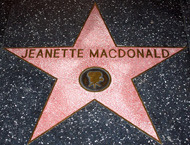
#Jeanette MacDonald#The Iron Butterfly#Opera#Silent Films#Silent Era#Silent Film Stars#Golden Age of Hollywood#Classic Hollywood#Film Classics#Old Hollywood#Vintage Hollywood#Hollywood#Movie Star#Hollywood Walk of Fame#Walk of Fame#Movie Legends#hollywood legend#movie stars#1900s#28 Hollywood Legends Born in the 1900s
4 notes
·
View notes
Photo

Hergé (Belgian, May 22, 1907 - March 3, 1983)
Belgian author and artist, 1907-1983. Translated into over thirty languages, Hergé’s adventure stories about the brave and resourceful young reporter Tintin are popular with both children and adults throughout the world In twenty-four book-length comic strips, Tintin and his faithful fox terrier, Snowy, embark on a series of thrilling global adventures set in remarkably detailed, meticulously researched landscapes.
Hergé. whose real name is Georges Remi (he devised his pen name by inverting his initials to R.G.), published the first Tintin adventure in Le Petit Vingtième, the children’s supplement to Le Vingtieme Siecle, in 1929. Published in book form in 1930 as Tintin in the Land of the Soviets, this primitive work is the only one of the series that was not later translated into color, with the exception of Tintin and the Alpha-Art, a work unfinished when Herge died and left in sketch form at his request.
The second adventure, Tintin in the Congo (1931), reflects a contemporary European view of Africa based on ignorance and portrays the African people as gullible and naive. Neither Congo nor the fanatically anti-Communist Soviets has yet been published in the United States.
In Tintin in America (1932), Tintin takes on Chicago mobster Al Capone, and Hergé’s sociopolitical satire becomes more sophisticated as he depicts the National Guard driving the Blackfoot Indians away from their ancestral lands. But it is probably The Blue Lotus (1936) that marks Hergé’s refinement of detail and concern for accuracy.
After befriending a young Chinese student who urged him to avoid common stereotypes, Hergé began to delve further into research of the physical and cultural landscape. The story is a clear protest of Japanese expansionism on the Chinese mainland and of the treatment of the Chinese people by many Westerners. Hergé’s friend appears as young Chang in The Blue Lotus and later in Tintin in Tibet (i960), a story of true friendship Hergé claims as his favorite.
Ostensibly a journalist, Tintin is seen reporting to his editor only once in the series and follows his sense of adventure and justice rather than any particular assignment. In the course of his adventures he encounters a colorful cast of characters who become his cohorts: The bumbling, ineffectual detectives Thompson and Thomson, the rough old sea dog Captain Haddock with his legendary penchant for drinking whiskey and hurling passionate but innocent insults, and the absent-minded but ingenious Professor Cuthbert Calculus provide both help and hindrance throughout Tintin’s travels.
All of these characters find their way aboard the first manned rocket bound, for the moon in Destination Moon (1953) and Explorers on the Moon (1954), in which Tintin, Snowy Captain Haddock, and Thompson and Thomson set foot on the moon fifteen years before Neil Armstrong landed in Apollo 11.
Hergé constructed a detailed scale model of a German U2 rocket to create the drawings, and his extensive scientific research gives the books remarkable accuracy and foresight. While most of the Tintin stories are noticeably devoid of women, opera singer Bianca Castafiore takes center stage as a strong female character in The Castafiore Emerald (1963).
Charles de Gaulle once remarked, “My only international rival is Tintin.”
source: Children’s Books and their Creators by Anita Silvey.
Hergé’s Tintin books in chronological order:
Tintin in the Land of the Soviets – (Tintin au pays des Soviets) (1929–1930)
Tintin in the Congo – (Tintin au Congo) (1930–1931)
Tintin in America – (Tintin en Amérique) (1931–1932)
Cigars of the Pharaoh – (Les Cigares du Pharaon) (1932–1934)
The Blue Lotus – (Le Lotus bleu) (1934–1935)
The Broken Ear – (L’Oreille cassée) (1935–1937)
The Black Island – (L’Ile noire) (1937–1938)
King Ottokar’s Sceptre – (Le Sceptre d’Ottokar) (1938–1939)
The Crab with the Golden Claws – (Le Crabe aux pinces d’or) (1940–1941)
The Shooting Star – (L’Etoile mystérieuse) (1941–1942)
The Secret of the Unicorn – (Le Secret de la Licorne) (1942–1943)
Red Rackham’s Treasure – (Le Trésor de Rackam le Rouge) (1943)
The Seven Crystal Balls – (Les Sept boules de cristal) (1943–1946)
Prisoners of the Sun – (Le Temple du soleil) (1946–1948)
Land of Black Gold – (Tintin au pays de l’or noir) (1948–1950)
Destination Moon – (Objectif Lune) (1950–1953)
Explorers on the Moon – (On a marché sur la Lune) (1950–1953)
The Calculus Affair – (L’Affaire Tournesol) (1954–1956)
The Red Sea Sharks – (Coke en stock) (1956–1958)
Tintin in Tibet – (Tintin au Tibet) (1958–1959)
The Castafiore Emerald – (Les Bijoux de la Castafiore) (1961–1962)
Flight 714 to Sydney – (Vol 714 pour Sydney) (1966–1967)
Tintin and the Picaros – (Tintin et les Picaros) (1975–1976)
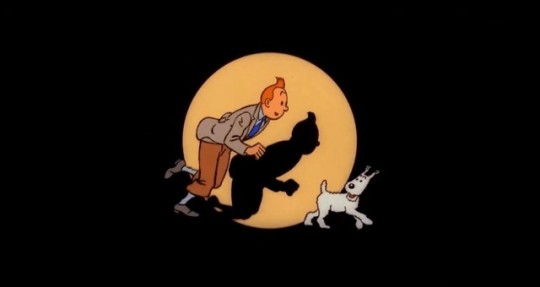
43 notes
·
View notes